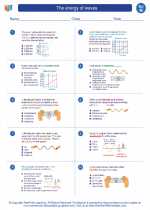Heterozygous
Heterozygous is a term used in genetics to describe an individual who has two different alleles for a particular gene. Alleles are different forms of a gene that can lead to different traits or characteristics.
Explanation:
Each individual inherits two alleles for each gene, one from their mother and one from their father. If these two alleles are different, the individual is said to be heterozygous for that gene. For example, if the gene for eye color has two alleles, one for brown eyes and one for blue eyes, an individual who inherits one allele for brown eyes and one allele for blue eyes would be heterozygous for that gene.
Study Guide:
To understand heterozygous better, consider the following key points:
- 1. Heterozygous individuals have two different alleles for a specific gene.
- 2. The different alleles may result in different traits or characteristics.
- 3. Heterozygosity is a fundamental concept in genetics and plays a crucial role in understanding inheritance patterns and genetic diversity.
It's important to familiarize yourself with Punnett squares, which are diagrams used to predict the possible genotypes and phenotypes of offspring based on the genotypes of the parents. Practice working with Punnett squares to understand how heterozygous traits are inherited and expressed.
Additionally, explore real-life examples of heterozygous traits in humans, animals, and plants to see how this genetic concept manifests in the natural world. This can help reinforce your understanding of heterozygosity and its significance in genetics.
Remember to review and practice regularly to solidify your understanding of heterozygous and its implications in genetic inheritance.
.





